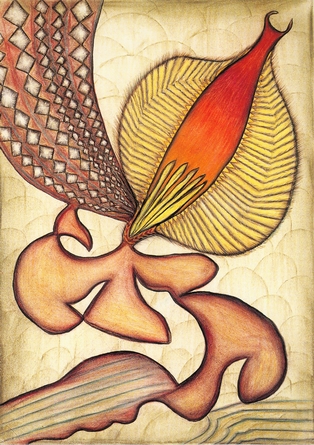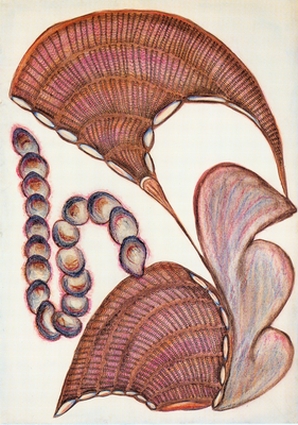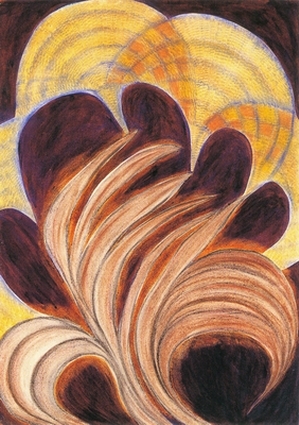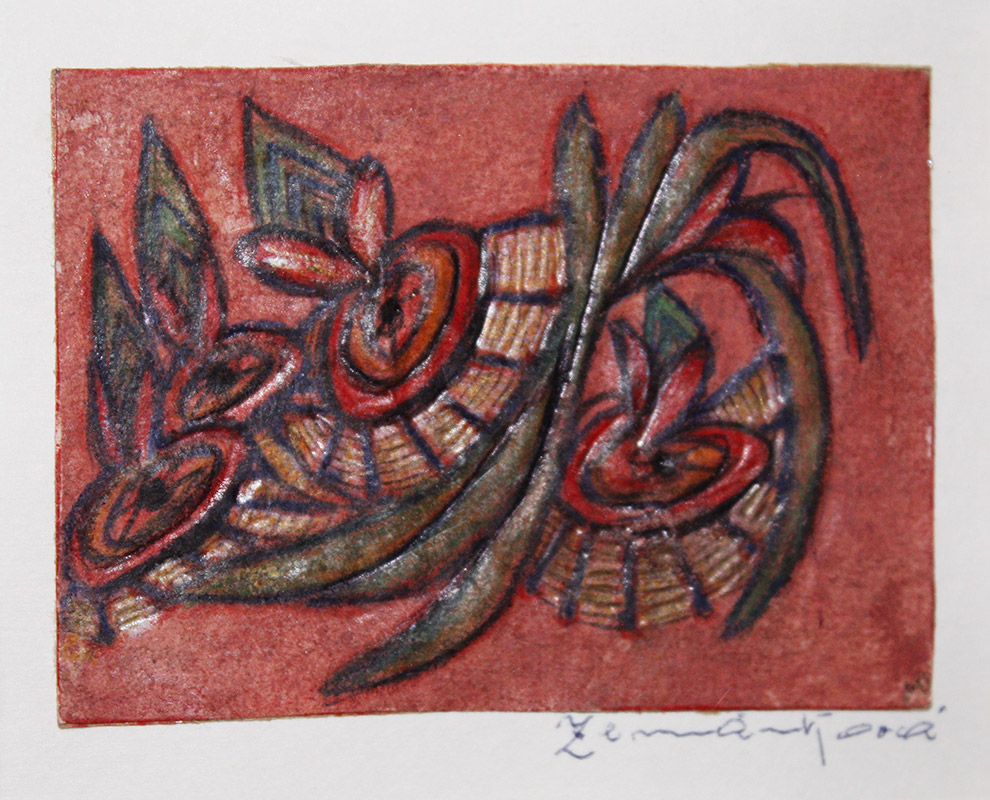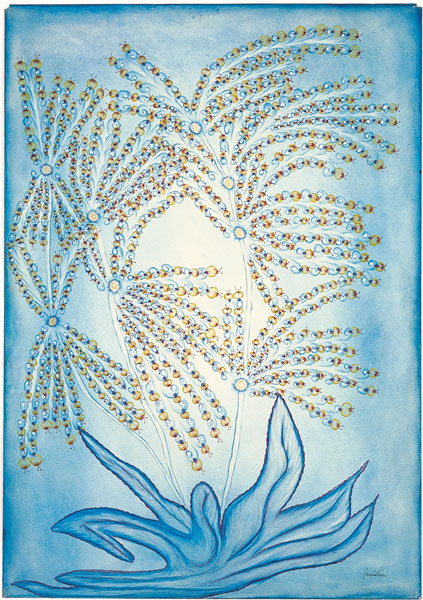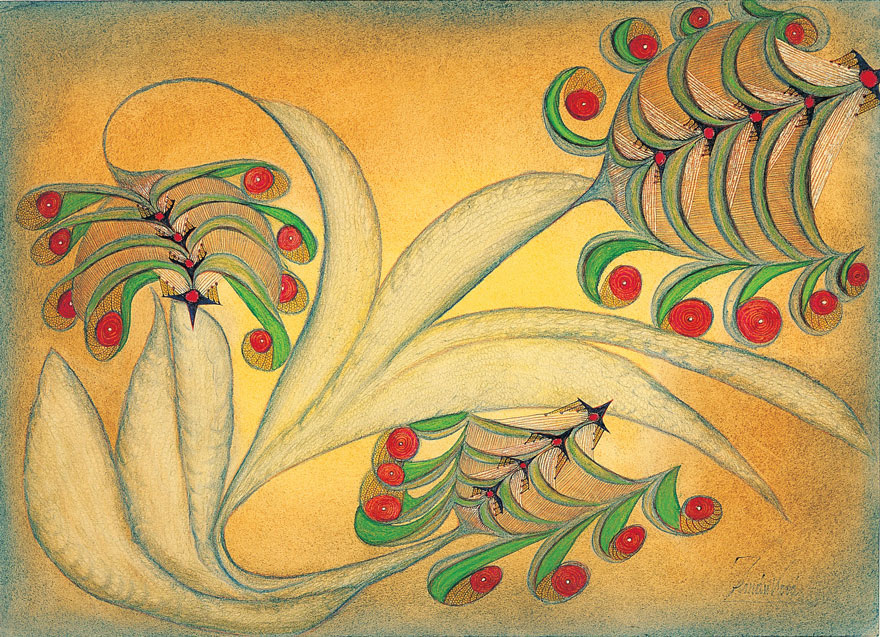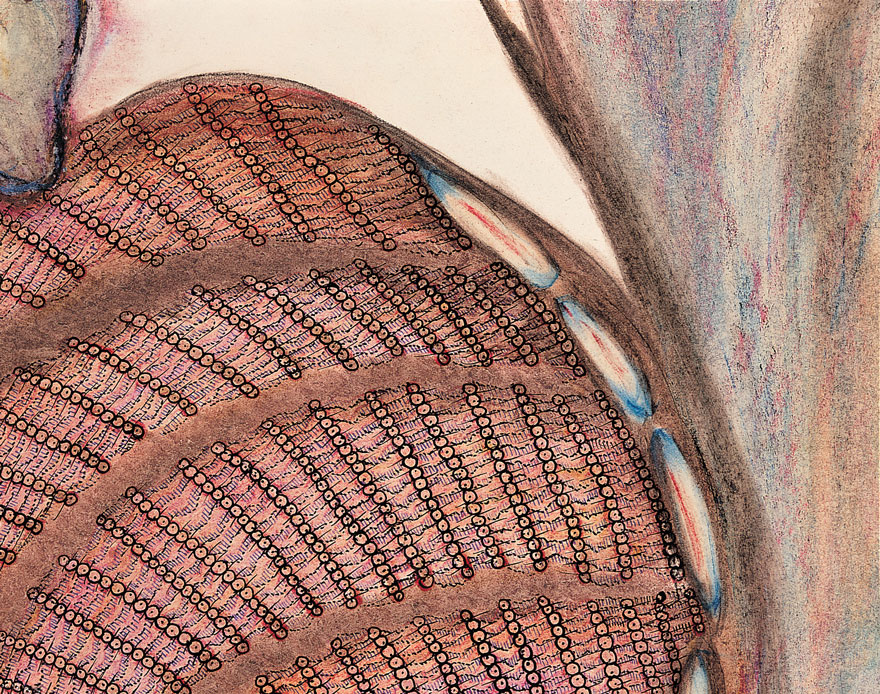Anna Zemánková
1908–1986, Moravian
Tags: Drawing
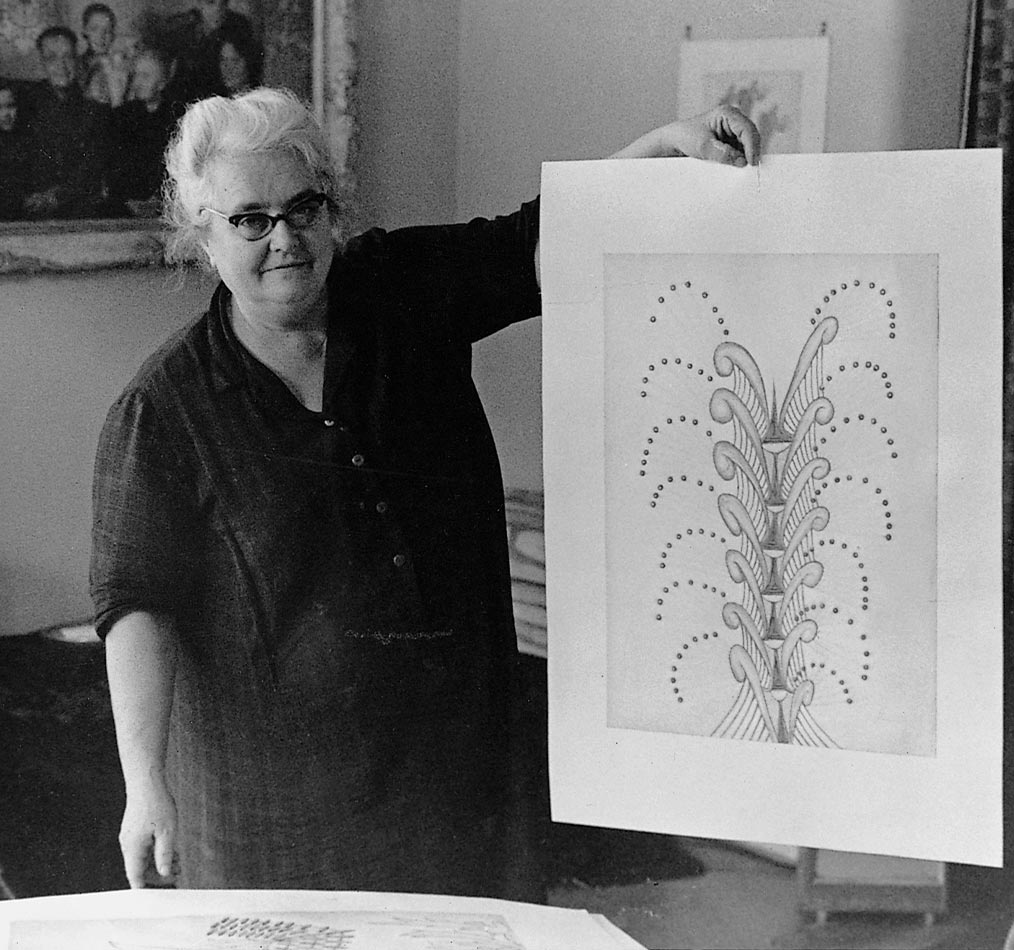
Anna Zemánková’s colorful drawings and collages feature biomorphic, decorative plant life. Her early pastel and oil pastel drawings are on large sheets of paper. She subsequently worked her surfaces by crimping and perforating paper and embroidering threads, beads, and spangles onto silk and satin. According to Annie Carlano, a curator at the Museum of International Folk Art, Santa Fe, Zemánková’s late works—black drawings on paper—were destroyed by one of her children.
Zemánková’s work is influenced by the folk traditions of her native Moravia (now part of the Czech Republic). The second of four children, she was born in the village of Staré Hodolany, near Olomouc. She enjoyed painting realistic landscapes and, during her teen years, had aspirations to attend the Academy of Fine Arts. Her father discouraged her artistic aspirations, so she studied to be a dental hygienist. In 1933 she married a civil servant and moved to Prague. She took up drawing as a means to assuage depression in the 1950s. According to her granddaughter, Terezie Zemánková, the formation of an independent Czechoslovakia in 1918 stirred a patriotic celebration of folk costumes, songs, and fairy tales that inspired her work.
